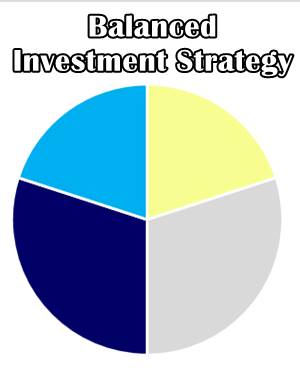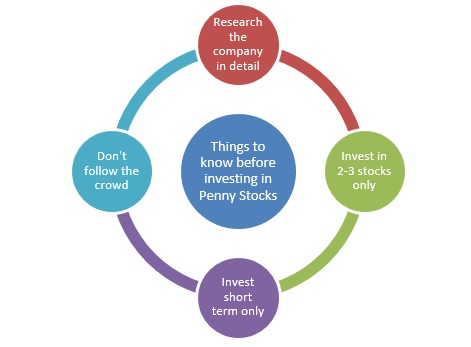What is GARP Investing? Why Unifi’s Strategy Deserves Investor Attention
In today’s fast-changing investment world, the debate between growth and Value investing is ongoing. Growth investors chase rapidly expanding companies, while value investors hunt for undervalued gems. But what if investors didn’t have to choose one over the other? That’s where GARP — Growth At a Reasonable Price — becomes a compelling strategy. It merges the best elements of both approaches, Offering a balanced way to build long-term wealth.
GARP is gaining traction in the Indian mutual fund space, especially with Unifi Mutual Fund adopting the strategy through its Flexi Cap Fund. Unifi, known for its research-driven Investing, uses GARP to build a focused equity Portfolio that avoids overhyped stocks and undervalued traps. In this blog, we’ll explore what GARP investing is, why it suits Indian investors, and how Unifi’s strategy brings it to life.
Understanding GARP: The Best of Both Investing Worlds
GARP (Growth At a Reasonable Price) is an investment strategy that seeks to identify companies with solid growth prospects, but which are not trading at sky-high valuations. It’s a middle ground between pure growth and value investing.
Rather than chasing every high-flying tech company or buying deeply undervalued stocks with uncertain futures, GARP focuses on businesses that are growing consistently and are priced rationally based on their fundamentals. A GARP investor asks, “Is this company growing, and am I paying a fair price for that growth?”
One of the most common tools in the GARP framework is the PEG ratio (Price-to-Earnings-to-Growth). This metric divides the stock’s P/E ratio by its expected earnings growth rate. A PEG ratio below 1.5 is typically seen as a sign that a stock offers reasonable growth at an acceptable price. This allows investors to compare companies across sectors in a more balanced manner than traditional valuation metrics.
The GARP strategy rewards companies with:
- Consistent earnings growth
- High return on equity (ROE)
- Stable business models
- Reasonable, not speculative, valuations
This makes it ideal for investors who want to benefit from India’s structural growth story without being trapped in overvalued momentum stocks.
Talk to our investment specialist
Why GARP is a Smart Strategy for Indian Investors
India’s equity markets often display a stark divide. On one side, you have growth-heavy stocks in sectors like defence, technology, and renewables that command premium valuations. On the other, you find undervalued public sector or cyclical companies with low Market interest, despite improving fundamentals.
In such an environment, GARP investing becomes a strategic bridge. It enables investors to benefit from earnings growth without overpaying, and it helps avoid value traps — companies that look cheap but lack consistent profitability or a long-term story.
Indian markets are also prone to sentiment-driven rallies and corrections. GARP’s balanced approach can reduce Volatility in the portfolio by screening out overvalued growth stocks and structurally weak value stocks. This strategy is especially helpful during uncertain times when investors need quality with a Margin of Safety.
With the growing participation of retail investors in Mutual Funds, SIPs, and thematic investing, GARP offers a disciplined, rational way to ride India’s growth while protecting against irrational exuberance.
How Unifi Mutual Fund Uses GARP in Its Flexi Cap Fund
Unifi Mutual Fund has built a reputation for differentiated investing, and its Flexi Cap Fund reflects this philosophy. Rather than being biased toward large-caps or mid-cap, the fund has the flexibility to invest across market capitalisations based on where reasonable growth lies. This is particularly effective for applying a GARP framework.
According to Unifi’s investment team, the Flexi Cap Fund typically holds 40 to 60 high-conviction stocks across at least five sectors. These are selected based on both top-down themes (like Make in India, EV, and Manufacturing) and bottom-up stock research. Importantly, Unifi avoids buying into themes just because they’re trendy. It only invests when the company’s valuation, growth, and business model align.
The fund uses classic GARP metrics like:
- PEG Ratio
- Return on Capital Employed (ROCE)
- Consistent cash flows
- Low-to-moderate leverage
Unifi’s edge lies in its deep research orientation. The team evaluates not just earnings numbers, but business sustainability, pricing power, and management capability. This means avoiding businesses with cyclical earnings, poor governance, or lack of competitive advantage.
The GARP approach shines here — Unifi isn’t buying fast-growing stocks unless the price justifies it. Nor is it investing in “cheap” stocks with poor long-term potential. Instead, it builds a portfolio of rational growth businesses that can compound earnings over the long run.
GARP vs Growth vs Value: Why It Matters
While GARP shares elements with both growth and value investing, it’s distinct in its approach.
- Growth investing often accepts high valuations if future earnings potential is huge. But it’s vulnerable to overvaluation.
- Value investing targets low-valuation stocks, often with a margin of safety. But it can suffer from underperformance if catalysts don’t emerge.
GARP balances both — it seeks growth, but not at any price. And it values earnings potential, but only if the fundamentals are strong.
For example:
- A growth investor may buy a stock at 80x P/E.
- A value investor might prefer a 6x P/E stock with weak earnings visibility.
- A GARP investor looks for something in between — say, a company growing at 20% annually, trading at a PEG ratio of 1.2, with strong return ratios and cash flows.
This makes GARP portfolios more resilient during corrections and better positioned for steady long-term returns.
Why GARP Funds Suit Indian Retail Investors
For Indian investors building wealth through SIPs and long-term equity exposure, GARP offers an appealing path. The strategy naturally filters out extreme valuations, reduces downside risks, and provides a consistent approach to compounding.
Moreover, a Flexi Cap structure allows fund managers to move across market caps — large, mid, and small — based on evolving opportunities. This flexibility ensures that the fund isn’t boxed into one style and can deliver returns across cycles. Retail investors who often feel overwhelmed choosing between growth-oriented and value-oriented funds may find a GARP-based fund a smart middle ground. It aligns with the goal of long-term capital appreciation, but with risk awareness and valuation discipline.
Final Thoughts
GARP investing is not a new idea globally, but in India, it is gaining new relevance as markets mature and investor expectations become more realistic. It brings back the essence of sensible investing: buying quality businesses with earnings visibility, but without paying irrational prices.
Unifi Mutual Fund’s Flexi Cap Fund captures this philosophy well — combining research, sector insights, and valuation logic. For investors looking for stable, long-term growth, Unifi’s GARP-based approach could be a strong contender in a diversified mutual fund portfolio. As Indian equity markets evolve, GARP will likely become more popular — not just for its performance potential, but because it makes investing feel logical again.
All efforts have been made to ensure the information provided here is accurate. However, no guarantees are made regarding correctness of data. Please verify with scheme information document before making any investment.












